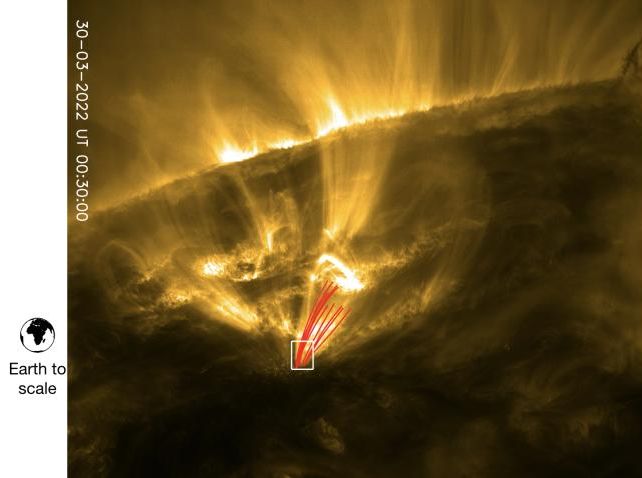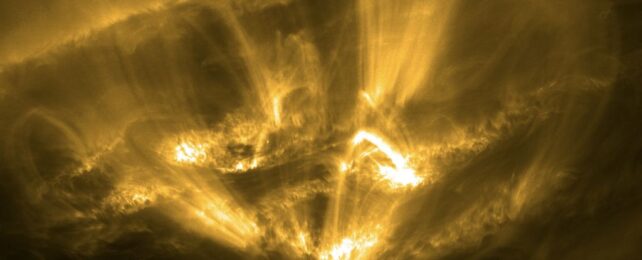Meteor-like fireballs in the atmosphere of the Sun rain down like showers of shooting stars during the phenomenon of coronal rain, scientists have found.
However, rather than the detritus of passing comets or asteroids, the Sun's "meteors" consist of balls of plasma that heat the gas in the atmosphere around them as they fall back down to the solar surface at speeds as fast as 150 kilometers (93 miles) per second.
The discovery of these details, led by solar physicist Patrick Antolin of Northumbria University in the UK, could help scientists learn more about the Sun's atmosphere, and why it is, strangely and paradoxically, so much hotter than the surface.
The research, available on the preprint server arXiv, will appear in Astronomy & Astrophysics, and was presented this week at the UK Royal Astronomical Society's annual National Astronomy Meeting.
Coronal rain – apart from what it's made of – obeys the same physical laws as rain here on Earth. Heated material rises from the surface, and as it rises higher, it cools, causing it to fall back down again. On Earth, that's usually water. On the Sun, it's plasma that traces the looping magnetic fields protruding from the solar surface.
We understand a fair bit about how coronal rain works, but the European Space Agency's Solar Orbiter (SolO) gave us an astonishingly up-close view. In March 2022, the probe swooped within just 48 million kilometers (30 million miles) of our star in its first of such daredevil maneuvers. This close encounter, called a perihelion, gave astronomers a wealth of close data to pore over.
This is where Antolin and his colleagues got their high-resolution data of clumps of plasma, up to 250 kilometers (155 miles) across, falling down in the coronal rain. And they also found, beneath those clumps as they fell back towards the Sun, compression and heating of the gas in the solar atmosphere up to around 1 million degrees Celsius. These hot spots last for a few minutes while the clumps continue their descent.
Here on Earth, when meteors fall, something similar happens (although it doesn't quite get as hot), turning pieces of rock into fireballs that are either worn away or explode from the heat and pressure. But things happen a little differently on the Sun, the researchers found.

Because the solar atmosphere is so thin, the clumps of plasma don't experience the sort of ablation meteors do here on Earth. And the loops of the magnetic field act as a sort of tunnel through which the clumps travel. Therefore, the plasma balls probably reach the surface intact, causing a brief flash of heat and light when they land. This, too, was captured by SolO.
But the magnetic loops also prevent the plasma from forming a tail, the way meteors do. This means it's much harder to see them.
"SolO orbits close enough to the Sun that it can detect small-scale phenomena occurring within the corona, such as the effect of the rain on the corona, allowing us a precious indirect probe of the coronal environment that is crucial to understanding its composition and thermodynamics," Antolin says.
"Just detecting coronal rain is a huge step forward for solar physics because it gives us important clues about the major solar mysteries, such as how it is heated to millions of degrees."
The research will appear in Astronomy & Astrophysics and is available on arXiv.
